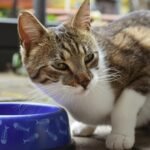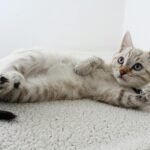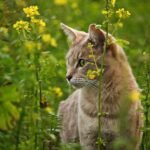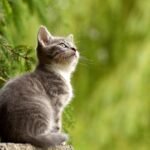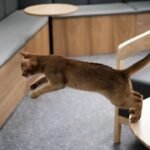When Mirri entered the world last November at the Wild Cat Conservation Centre, her survival was far from certain. Born during a scorching 47°C heatwave and weighing just 180 grams, this tiny clouded leopard cub faced tremendous odds.
Now, three months later, she’s hit a remarkable milestone that has her caretakers celebrating.
A Difficult Beginning for Australia’s First
Image by unsplash
Mirri’s birth was complicated from the start. She arrived breech, with only her tail visible for an agonizing 20 minutes. After delivery, the conservation team anxiously watched via remote cameras, hoping to see signs of maternal bonding and nursing.
“Those first six hours were incredibly tense,” explains Ben Britton, Director of the Centre. “Normal leopard cub behavior includes suckling within one to two hours after birth.”
When this critical window passed without nursing, and mother Moana abandoned the den box entirely, the team made the difficult decision to intervene. This moment of crisis would shape Mirri’s entire future.
Hand-Raising: A Conservation Challenge
Image by unsplash
Conservation efforts for clouded leopards are complex under ideal circumstances. When hand-raising becomes necessary, the challenges multiply. Unlike some species, clouded leopards are notoriously difficult to reintroduce to their parents once human intervention occurs.
“Any attempt to reunite Mirri with Mark and Moana could be fatal,” Britton notes matter-of-factly. “They no longer recognize her as their offspring.”
Instead, the Centre has developed an innovative approach to ensure Mirri develops natural behaviors despite her unusual upbringing. She’s gradually being introduced to an outdoor habitat alongside resident clouded leopards Tai and Cinta. These controlled interactions help her develop essential wild skills.
Growing and Learning Daily
Now weighing a healthy 2kg, Mirri spends increasing time exploring her outdoor space. Her caretakers observe as she masters the fundamental skills of her species.
“She’s now confidently running and climbing,” shares Britton. “We even observed her first reaction to rain—a mixture of fascination and bewilderment.”
This progress represents more than just physical growth. Each new skill brings Mirri closer to fulfilling her potential role in the international breeding program for this vulnerable species.
Global Significance of One Small Cub
Image by pexels
Mirri’s successful development has implications far beyond Australia’s borders. As part of carefully managed international conservation programs, her genetic contribution could be crucial for the species’ future.
The Centre works closely with both the European Endangered Species Programme and the United States’ Species Survival Plan. These collaborations ensure that breeding decisions maximize genetic diversity within the captive population.
“Early indications suggest Mirri may travel to the United Kingdom later this year,” reveals Britton. “She’ll likely be paired with a young male cub there.”
This international cooperation highlights the sophisticated network supporting modern conservation efforts. Introducing unrelated cubs at a young age improves the likelihood of successful bonding and breeding in adulthood.
The Future of Clouded Leopard Conservation
The Wild Cat Conservation Centre’s dedication is particularly significant as Australia’s only facility approved to work with clouded leopards. For eight years, they’ve navigated complex logistics, including international transfers and COVID-related delays, to establish their program.
Clouded leopards remain one of the most enigmatic and challenging cat species to breed in captivity. Their specific care requirements and elusive nature in the wild make successful breeding programs like this essential to their long-term survival.

